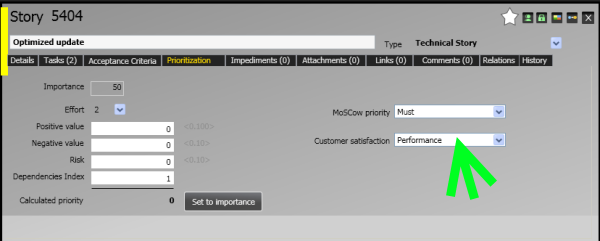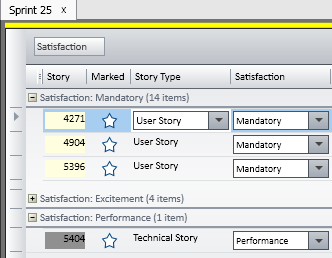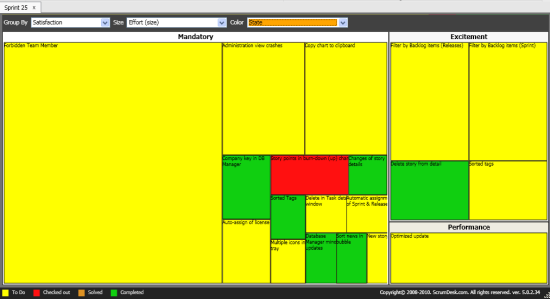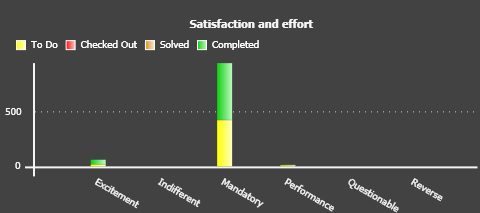Product management is about searching for the most important requirement that needs to be delivered as the next. There are different prioritization practices. One such dimension that product owner should be aware of is expected customer satisfaction. Satisfaction with developed feature or story.
Mr. Noriaki Kano developed Kano model as valuable technique helping to recognize that. Applying this method the product owner can identify the importance of stories by asking questions like these:
Is the feature mandatory? We will not earn additional revenue once we have it but without it the product doesn’t fulfill existence principles.
Having a feature, will customer say: “Hey, that’s nice! I like this approach and it seems to be really helpful.” This feature is excitement. It is possible differentiator.
Well, guys improved a performance of the application. This is valuable. Comparing to other products, this product is one I would like to use.
Hmm, this feature is indifferent. It doesn’t matter if this feature is or is not implemented. If vendor provides it, ok, I accept it. If it’s not implemented, no problem then.
This feature is really questionable. I am not sure if I am going to pay for product with such feature. It will probably slower me. Also, I assume it will complicates usability in my company. Let’s think about different product.
Ohhh no! Not the feature like that. You are kidding. This feature reverse me to really find a different product.
Such perspective is the great way to identify priorities in complex backlog.
How ScrumDesk Windows integrates Kano model
A story in ScrumDesk Windows provides the possibility to gather data about expected customer satisfaction level in story detail window, Priority tab.
The level of satisfaction is possible to change in stories grid where data can be analyzed using filters and grouping features that grid allows. The grid allows an inline editing so data can be changed easy.
If the backlog is complex, then tree map can helps to product owner to validate priorities vs customer satisfaction.
Stories grouped by satisfaction level, color by the current status
Explanation: One excitement story is developed (green) even there are more mandatory stories. The product owner should validate priorities & contact team.
Another overview of the backlog is available in Satisfaction and effort chart. This chart is accessible in Reports/Prioritization tab. The chart displays the distribution of effort according to assumed customer satisfaction level. It is easy to recognize if developers are focused on correct stories.





